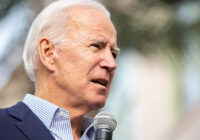The world of presidential electoral politics in the US has, for some time, become the Superbowl of hyperreality. The day after the NFL Superbowl, without the slightest pause, the physical sport of American football yielded the spotlight to the political sport of the presidential primaries, which will be marked by a slow build-up to the conventions in July and August. Along the way, the public will thrill to the scoring opportunities as multiple states conduct their local primaries.
Iowa had the privilege of hosting the pre-game theatrics during several months of campaigning leading to Monday’s exciting kickoff. The polls reported by the media primed the spectators’ interests, with some unexpected shifts, especially in the final weeks attributable to fumbles and interceptions. The drama was there, as everyone could feel the tension. The teams were lined up and waiting for the whistle.
But then, as the Roman poet Horace once said, “The mountains gave birth to a ridiculous mouse,” or in updated terms, the kickoff didn’t take place because there was a problem with the tee. It simply couldn’t hold the football upright for the initial kick.
Iowa’s caucuses closed at 7 p.m. on Monday night. Well into Tuesday morning, as much of the US was glued to the television, the results displayed for the list of candidates indicated 0% for all of them. It’s not that results were slow in coming in. There were no results. Everything depended on a brand new mobile app the Democrats had carefully chosen and commissioned, because in today’s technologically hyperreal world, votes and opinions must be processed by apps. And the app showed some “inconsistencies.”
Can Sanders or Warren Clinch the Democratic Nomination?
By midnight this is how the major media were reporting the results: “Several campaigns tell ABC News they have not been given a timeline for data release — an additional delay that could prove disappointing for the ‘real winner’ who spent tons of time and money and effort in Iowa hoping for a big moment on Monday.”
The mainstream media have continued to refuse anything but confirmed results. With what may be a scoop, The Intercept reported partial results released by the Sanders campaign that indicate Bernie Sanders may well be the winner, followed by Pete Buttigieg, while the party’s favorite, Joe Biden, drops significantly below his expected finish in first or second position. This may also explain the party’s reticence to publish the results.
We may have to wait to know the real winner, but we do know who the losers are.
Here is today’s 3D definition:
Real Winner:
The candidate who probably did get a majority of actual votes in an American election but whose majority, thanks to myriad techniques, technologies and sanitizing filters, will be obscured or erased in favor of candidates with better control of the techniques and technologies.
Contextual Note
With midnight long past, the news media could report that the caucuses had taken place and the results were in. But only the people at the Democratic headquarters were aware of even partial results. They explained the ethical reasons that prevented them from releasing the partial results: “The integrity of the results is paramount.” The leaders of Democratic Party have long been known for their obsession with integrity.
CNN quotes Polk County Democratic chairman, Sean Bagniewski: “There’s no way to report them. We’ve got them.” When certain precinct chairs attempted to report directly to the state headquarters after taking pictures of their local tallies, they were “turned away and told that precinct chairs should call their results in as usual.” The Iowa Democratic Party explained that it needed time for “quality checks.” It didn’t indicate if it was checking the quality of the results or finally getting around to debugging the app.
The chaos provided a perfect occasion for US President Donald Trump to castigate the Democrats for “the sloppiest train wreck in history.” As someone who had just this past week engineered the successful cancellation of his impeachment trial, which some might be tempted to call the neatest train wreck in history, Trump had every reason to celebrate. The Republicans have always been more talented and skilled at manipulating electoral processes and constitutional scams than the Democrats. The pros do things neatly, the amateurs sloppily.
Trump used the occasion to comfort his brand of hyperreality by suggesting that the “mess” was the consequence of rigging: “It would be natural for people to doubt the fairness of the process.” Trump is right. In hyperreality, the notion of doubt is an essential tool. When everything is illusion, the illusion that has the least amount of doubt attached to it will emerge as the “real winner.” The Democrats keep trying and excel at failing. After three years of the Mueller investigation and the now aborted impeachment, Trump once again demonstrates his mastery of hyperreality. At the same time, the Democrats, incapable of assessing the disastrous consequences of their own chaotic attempts at producing hyperreality, demonstrate their ineptness.
Historical Note
Ever since P. T. Barnum put his stamp on US culture in the 19th century, the cultivation of hyperreality as a satisfactory substitute for the messiness of reality has been a feature of the nation’s identity. In the 20th century, the science of marketing displaced, and perhaps even replaced, political science. Thanks to the various media technologies that accelerated the trend, hyperreality moved from being a satisfactory substitute for reality — which most people found boring — to becoming a necessary ingredient, and even guiding principle, of electoral politics.
Over the past 60 years, three presidents have contributed to building the ever-growing infrastructure of political hyperreality in the US. The first was John F. Kennedy, who embodied what may now be referred to as the Camelot principle. The image became more important than any of the acts. Kennedy was in many ways a “serious” president attempting to address real problems and challenges but, inheriting the Hollywood-influenced culture of his father Joe Kennedy (who dabbled in studio production and occasionally dallied with the actresses), he was also the first to discover that constructing hyperreality could be a necessary ingredient for getting things done.
Tragically, JFK may have failed to appreciate that the realization of a convincing hyperreality would set in motion an unstoppable trend. The focus of politics began shifting away from using the vaunted democratic institutions of the US, with its checks and balances, to address the problems and challenges toward a full-time engagement in the construction of hyperreality itself. His success at creating the dynamics of hyperreality may even have led to his assassination. Those who firmly held the reins of power at the core of the military-industrial complex, Dwight D. Eisenhower had warned about upon leaving office, may have feared being overwhelmed by one man’s highly personal hyperreality.
The next to refine the fine art of hyperreality was none other than Ronald Reagan, a former Hollywood actor who spent three decades, after the end of his acting career, learning the script provided by the far-right John Birch Society and translating it into a humanized version of benevolent Republican patriarchy. Reagan used his Hollywood reputation to become governor of California. This allowed him to test the marketing techniques that would permit him to secure the Republican nomination in 1980 and defeat an incumbent president, peanut farmer Jimmy Carter, who clearly had no talent at creating hyperreality.
Then the most hyperreal year in recent history, 2016, gave the world not only Brexit but also Donald Trump. The Donald added a totally new dimension to the house of mirrors, following eight years of the prudently and effectively managed political hyperreality of Barack Obama, who used a talent for hyperreality coupled with the undeniable reality of his race to appear to be an outsider. Once in office, he proved to be the consummate insider.
Trump, a practitioner of the creative chaos of reality TV in contrast with Reagan’s Hollywood discipline, is clearly the most outrageous personality and putative leader that the US has ever managed to produce. He is also the most effective producer of hyperreality, partly because he knows how to get others to do the job for him — in this case the Democrats. He may not have succeeded in getting Mexico to pay for his wall (a hyperreal promise), but he has succeeded in getting the Democrats to build the most impressive of his hyperreal façades.
But Trump is also fragile. The fact that he is so thoroughly hyperreal means that for the first time Americans are beginning to realize that they may be forced to make an existential choice between reality and hyperreality, the Disneyland-inspired world of solidly built political illusion. Logically, the Democrats should have perceived this opportunity, and, in all fairness, a minority of them have done so. But the two-party system itself is an essential feature of American hyperreality. Given the culture that has developed over the decades within the party, from Kennedy to Clinton and Obama, reality itself, where it emerges to break the pattern, has come to be seen as a threat.
Democratic National Committee Chairperson Donna Brazile confessed that in the 2016 primaries, the DNC tried multiple means of manipulation, rigging and media ploys to construct its hyperreal vision of a Hillary Clinton presidency. They recycled the aging movie sets that were still standing from the Bill Clinton years and added a few Barack Obama façades. But they then made the mistake of drafting a script that, alas, lacked the dramatic tension spectators expect to be enthralled by. The only tension that existed came from an unexpected source — the outsider Bernie Sanders, who apparently hadn’t read their script. Or rather he had read it and was ready to submit one that might actually build up to a climax. But the Democrats weren’t ready for the emotion and preferred to go with their initial screenplay.
By the end of 2016, when Trump emerged from the artificial smoke that had engulfed the stage, the Democratic Party had rebranded itself as the party tragically allergic to reality and incapable of constructing hyperreality. The Iowa caucuses have now confirmed that simple historical fact. The public should not be surprised.
[In the age of Oscar Wilde and Mark Twain, another American wit, the journalist Ambrose Bierce, produced a series of satirical definitions of commonly used terms, throwing light on their hidden meanings in real discourse. Bierce eventually collected and published them as a book, The Devil’s Dictionary, in 1911. We have shamelessly appropriated his title in the interest of continuing his wholesome pedagogical effort to enlighten generations of readers of the news.]
The views expressed in this article are the author’s own and do not necessarily reflect Fair Observer’s editorial policy.
Support Fair Observer
We rely on your support for our independence, diversity and quality.
For more than 10 years, Fair Observer has been free, fair and independent. No billionaire owns us, no advertisers control us. We are a reader-supported nonprofit. Unlike many other publications, we keep our content free for readers regardless of where they live or whether they can afford to pay. We have no paywalls and no ads.
In the post-truth era of fake news, echo chambers and filter bubbles, we publish a plurality of perspectives from around the world. Anyone can publish with us, but everyone goes through a rigorous editorial process. So, you get fact-checked, well-reasoned content instead of noise.
We publish 2,500+ voices from 90+ countries. We also conduct education and training programs
on subjects ranging from digital media and journalism to writing and critical thinking. This
doesn’t come cheap. Servers, editors, trainers and web developers cost
money.
Please consider supporting us on a regular basis as a recurring donor or a
sustaining member.
Will you support FO’s journalism?
We rely on your support for our independence, diversity and quality.






